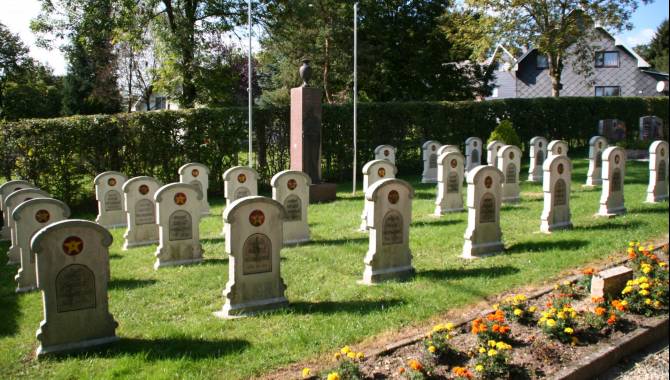Nidrum
1/4



Photo: nidrum friedhof 01 c ostbelgien.eu , CC BY ,East Belgium Tourist Agency NPO

Photo: nidrum friedhof 02 c ostbelgien.eu , CC BY ,East Belgium Tourist Agency NPO

Photo: nidrum kirche 01 c ostbelgien.eu , CC BY ,East Belgium Tourist Agency NPO

Photo: nidrum kirche 05 c ostbelgien.eu , CC BY ,East Belgium Tourist Agency NPO




Description
The village of Nidrum is located on a plateau that gently slopes down into the Warche valley. Because of its unspoilt, varied natural landscapes and vast green spaces, the place is surrounded by idyllic tranquillity.
The history of the village can be traced back to the early 15th century. It was not until 1720 that the inhabitants of Nidrum received their own chapel. It was elevated to the parish church dedicated to the Three Kings in 1898. The tower and vestibule date from 1861. The choir and nave were rebuilt in 1904 in a neo-Gothic style. The bell tower was changed in 1935 and 1936. In 1968, the old choir gave way to a new, semi-circular construction. The main altar (around 1907 – consisting of the former side altars), to the left of the altar on the wall: Jesus and the Emmaus disciples (around 1907 – part of the former communion bench); the baptismal font between other parts of the former communion bench (in front on the right wall): Adoration of the Wise Men (from the former main altar); in the back of the church: St. Mary's altar with mosaic picture; the Stations of the Cross in the choir – both works of art date from 1968.
On the site of the village cemetery, there is a small military cemetery where 32 Russian prisoners of war found their final resting place. They perished between 1942 and 1944 in Sourbrodt and Elsenborn.
Further information:
http://www.butgenbach.info/en/explore/touristic-highlights/villages/nidrum/
Further information on hiking opportunities:
http://www.butgenbach.info/en/walking/overview-walks/
Carte
Nidrum
Kirchstraße
4750 Nidrum